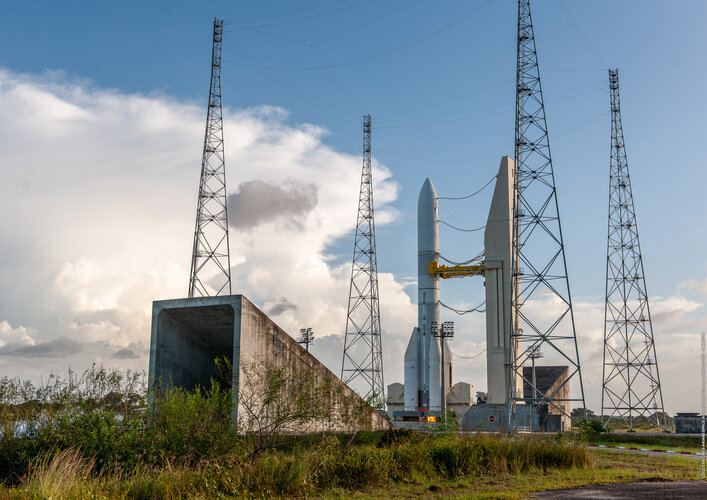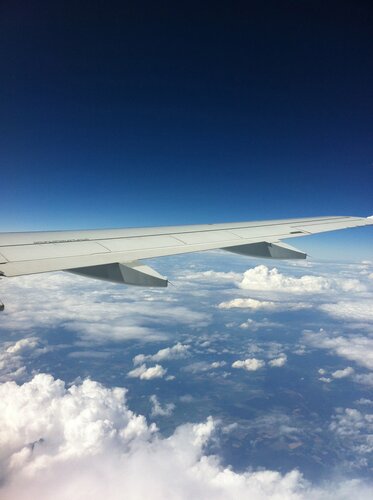
Copernical Team
How do microbes spread globally
 The study "Understanding atmospheric intercontinental dispersal of harmful microorganisms"* compiles the scope of the problem of the global dispersal of harmful microorganisms through the upper layers of the atmosphere. It confirms that the atmosphere -specifically the free troposphere- acts as a highway for many microbes and emphasizes the mechanisms that facilitate it.
The work combines
The study "Understanding atmospheric intercontinental dispersal of harmful microorganisms"* compiles the scope of the problem of the global dispersal of harmful microorganisms through the upper layers of the atmosphere. It confirms that the atmosphere -specifically the free troposphere- acts as a highway for many microbes and emphasizes the mechanisms that facilitate it.
The work combines Above: Orbital achieves significant milestone with NASA in Space Station gravity tech
 In a significant leap for space technology, Above: Orbital, the innovative space-based platform design and development company, has recently confirmed the successful testing of its cold gas engine thruster technology and related software. The trial, held at the NASA Marshall Space Flight Center, highlights a remarkable progression in the development of artificial gravity platforms.
Above:
In a significant leap for space technology, Above: Orbital, the innovative space-based platform design and development company, has recently confirmed the successful testing of its cold gas engine thruster technology and related software. The trial, held at the NASA Marshall Space Flight Center, highlights a remarkable progression in the development of artificial gravity platforms.
Above: Potential earthquake precursor discovered through GPS measurements
 In a significant development in the field of earthquake prediction, a study by the Paris Institute of Planetary Physics suggests that a noticeable stage of fault slip can occur two hours before significant earthquakes. The analysis, which evaluated Global Positioning System (GPS) time-series data from almost 100 large-scale seismic events worldwide, provides evidence for this groundbreaking hypo
In a significant development in the field of earthquake prediction, a study by the Paris Institute of Planetary Physics suggests that a noticeable stage of fault slip can occur two hours before significant earthquakes. The analysis, which evaluated Global Positioning System (GPS) time-series data from almost 100 large-scale seismic events worldwide, provides evidence for this groundbreaking hypo Groundbreaking 3D-Printed frictionless gear for space applications
 Space equipment is no stranger to being described as "alien artwork", but the latest development from the Swiss team at CSEM, in collaboration with 3D Precision SA and Almatech SA, can rightly earn that moniker. The cutting-edge design they've produced is a unique 3D-printed gear mechanism, one that stands to revolutionize the functionality of critical space instruments. With a construction that
Space equipment is no stranger to being described as "alien artwork", but the latest development from the Swiss team at CSEM, in collaboration with 3D Precision SA and Almatech SA, can rightly earn that moniker. The cutting-edge design they've produced is a unique 3D-printed gear mechanism, one that stands to revolutionize the functionality of critical space instruments. With a construction that The Stickiness Dilemma: Size plays a pivotal role in cosmic dust adhesion
 Size matters when it comes to the formation of planets from cosmic dust, according to a team of astrophysicists from Tohoku University. The researchers' simulations found that the larger the dust aggregate, the less likely it is to stick together following a collision, an observation that may have significant implications for our understanding of planetary evolution.
The formation of new p
Size matters when it comes to the formation of planets from cosmic dust, according to a team of astrophysicists from Tohoku University. The researchers' simulations found that the larger the dust aggregate, the less likely it is to stick together following a collision, an observation that may have significant implications for our understanding of planetary evolution.
The formation of new p Tracing Ryugu's Anhydrous Lineage: A connection to outer protoplanetary disk
 The cosmic lineage of the second-generation carbonaceous asteroid Ryugu can be traced back to a distant past and a far-flung location in our solar system, according to recent studies on the space rock's anhydrous minerals. The infrared spectra of these grains provide a link between the initial reservoirs, from which Ryugu's progenitor arose, and those that birthed primitive asteroids and comets
The cosmic lineage of the second-generation carbonaceous asteroid Ryugu can be traced back to a distant past and a far-flung location in our solar system, according to recent studies on the space rock's anhydrous minerals. The infrared spectra of these grains provide a link between the initial reservoirs, from which Ryugu's progenitor arose, and those that birthed primitive asteroids and comets From AI to Nuclear: UK launches Strategic Plan for Future Space Exploration
 Following a close consultation with the space sector, the UK Space Agency recently unveiled the Space Exploration Technology Roadmap, a strategic guide that will shape the direction of research, development, and funding allocation for the next ten years. The plan anticipates working closely with key international partners, including NASA, the European Space Agency, and JAXA (Japan's space agency
Following a close consultation with the space sector, the UK Space Agency recently unveiled the Space Exploration Technology Roadmap, a strategic guide that will shape the direction of research, development, and funding allocation for the next ten years. The plan anticipates working closely with key international partners, including NASA, the European Space Agency, and JAXA (Japan's space agency Ariane 6: launch system tests progressing well

Teams preparing Ariane 6 for its inaugural flight successfully completed for the first time a launcher preparation and countdown sequence, on 18 July at Europe’s Spaceport in Kourou, French Guiana.
Satellites unveil the far-reaching impact of irrigation

Globally, more than 70% of the freshwater withdrawn from Earth’s surface or from underground is used to irrigate crops. The need to produce more food for a growing population against the backdrop of climate change is challenging enough, but satellites reveal that extracting water doesn’t just affect the local environment – there are knock-on consequences for many aspects of the Earth system.
Advanced aircraft tracking will come live from space

Satellites will soon be used to keep an independent eye on airborne planes, under a deal agreed between ESA and Spire Global, a company that provides space-based data, analytics and space services.

